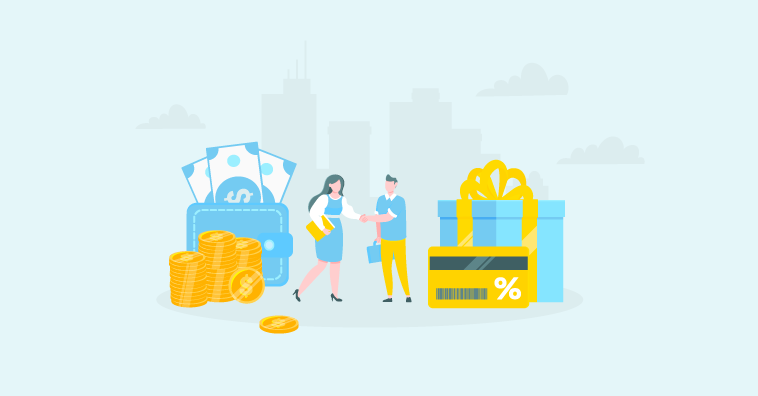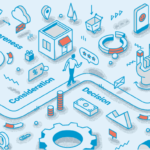True or false? Bringing new customers into your store or onto your e-commerce site is the secret to growing your retail business. True, but growth only happens when new customers turn into repeat customers who then turn into loyal customers. Customer retention and loyalty is the real secret behind retail success.
Customer loyalty programs can provide the spark that inspires repeat visits, customer engagement, and long-term relationships. Done well, retailers turn their loyalty program into a differentiator that grabs customer attention and keeps them coming back. And in today’s hyper-competitive retail marketplace, who doesn’t want a differentiator? Read on for a comprehensive guide to building (or enhancing) a customer loyalty program that works for your retail business.
What is a customer loyalty program?
Customer loyalty programs are designed to encourage repeat business by offering shoppers rewards, discounts, or other incentives. The primary function of a loyalty program is to reward customers for repeat purchases over time. However, the secondary function can be even more valuable. Loyalty programs provide retailers with a wealth of customer information. Typically, to join a loyalty program, customers provide the retailer with basic personal information. From there, the retailer is able to capture valuable data points as the customer relationship develops. The data turns into insights about what drives customer purchases, which products are most likely to be purchased together, and how a customer journey evolves.
Related: POS Data: The Power to Personalize
Why do loyalty programs work for retailers?
The probability of making a sale to a new customer is estimated to be between 5 and 20 percent. For existing customers, the likelihood of a sale jumps to 60 to 70 percent. That means increasing customer loyalty by just 5 percent can boost profits by 25 to 95 percent. Clearly, investing in customer retention strategies is a smart move for retailers.
Well-designed loyalty programs are an effective way to drive desired customer behaviors and increase retention. Research shows that even the simplest, non-tiered rewards programs have a significant impact, increasing customer value by nearly 30 percent, with customer value defined as increased purchase frequency and decreased attrition.
Today’s customers expect and value loyalty programs. Eight in ten Americans participate in at least one loyalty program. And 84 percent of participants say loyalty programs make them more likely to return to a retailer, with 66 percent of shoppers saying they’ve changed their spending behaviors based on the ability to earn rewards.
Related: Is Your Customer Loyalty Program Working Hard for Your Business?
How do customer loyalty programs work?
When designing a loyalty program, the first step is to determine the structure that’s right for your business. The most common program types are:
Point-based rewards programs
Participants earn points based on purchases that add up to freebies, perks, or discounts. Beyond purchases, points can also be awarded for customer referrals, online reviews, and promotional posts on social media.
Tiered loyalty programs
Participants achieve a series of ranks based on defined criteria such as purchase levels or length of time as a customer. The tiers are designed to give customers goals to reach. As they achieve higher levels, the rewards become more exclusive and valuable.
Paid loyalty programs
Participants pay a recurring or one-time fee to join the retailer’s loyalty program in order to receive rewards immediately. The key is to ensure the value of the awards is in line with the fee and offer member-only exclusives. (A well-known example of a paid loyalty program is Amazon Prime.)
Customers have plenty of experience with loyalty programs, and therefore, high expectations. They want the programs to be easy to join and simple to understand with rewards they consider worth earning. Plus, along the way, they expect the retailer to deliver surprises and exclusives that keep them engaged and participating.
For retailers, the good news is that top point-of-sale (POS) systems are designed to help make implementing and managing effective customer loyalty programs easy – from tracking participant activities through the redemption of the rewards. Even better, integrated POS systems optimize customer experiences by seamlessly connecting the dots between loyalty programs, customer relationship management (CRM), and marketing outreach.
POSIM is a point-of-sale and inventory management system that’s designed to help retailers build strong customer relationships with loyalty programs that reward top customers – and drive sales. Explore what’s different about POSIM. Contact us for a demo today.












